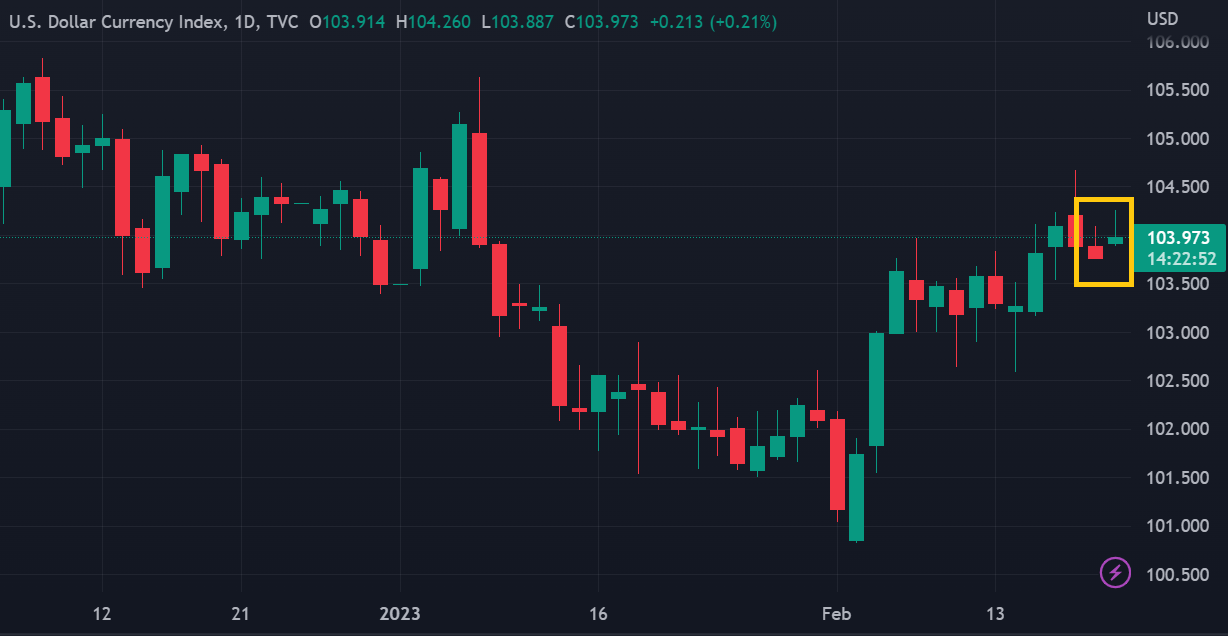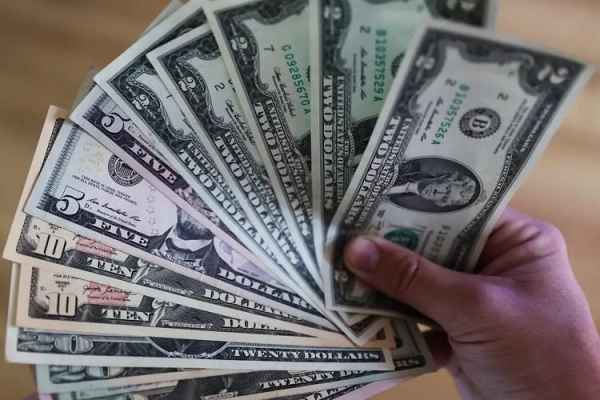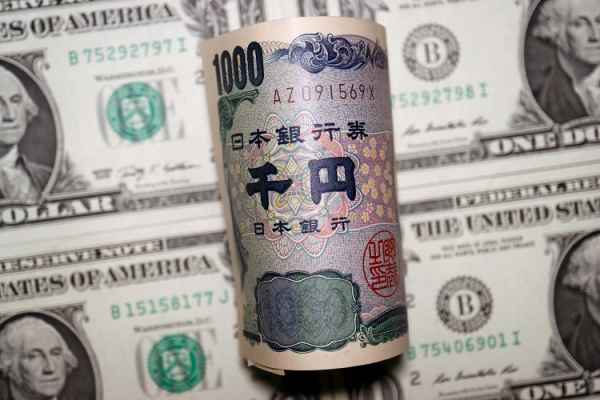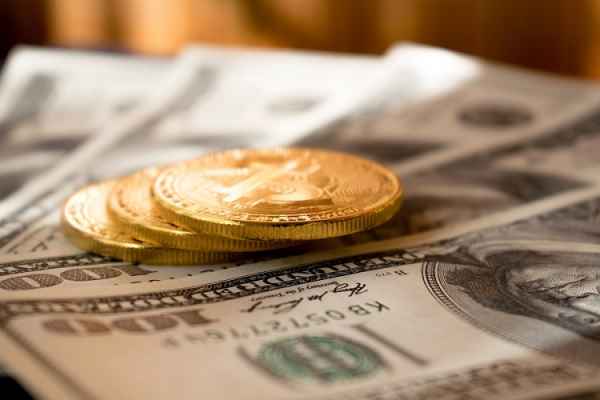The US dollar's rally continues today's bullish consolidation. But several factors hinder the continuation of the rally ahead of tomorrow's release of the FOMC minutes.
The US dollar index (DXY) continued its bullish consolidation in a narrow band around 104.00 during the Asian trading on Tuesday (21/Feb), still near a six-week high. Major currency pairs have shown mixed performance, while market participants look forward to some interest rate announcements and the publication of important economic data this week.

DXY Daily chart via TradingView
U.S. employment and inflation data that beat expectations have lifted market estimates for the Fed's interest rates this year, thus restoring the U.S. dollar's rally since early February. The greenback was corrected yesterday due to the closing of U.S. stock exchanges amid President's Day celebrations but bounced back with caution today.
AUD/USD and NZD/USD are marginally weaker when writing this news. USD/CAD consolidates gains in the 1.3460s. USD/JPY rose around 0.3 percent, while EUR/USD was crushed at 1.0657. Only the Sterling is ahead by about 0.5 percent against the USD thanks to the release of U.K. economic data that exceeded expectations.
Future market participants will be looking for more high-impact non-US data releases. After the Purchasing Managers' Index (PMI) report for several European countries at today's European session, there will also be a publication of Canadian inflation data later tonight. The dollar will face the release of the S&P Global version of the US PMI data, but these data are usually considered less accurate than the ISM version of the US PMI.
New Zealand's rate announcement will kick off Wednesday's Asian session. German inflation data and the IFO index could significantly impact the euro. The U.S. dollar is threatened with pressure if non-US data exceeds market estimates due to the absence of domestic catalysts until the release of the FOMC minutes in tomorrow's New York session.
Kit Juckes, a strategist at Societe Generale, thinks there are two reasons why the U.S. dollar's rally has been hampered in EUR/USD. First, growth projections for the U.S. and Europe are converging. Second, the gap between U.S. and European interest rate expectations is narrowing.
"Euro/dollar's inability to continue falling after Friday's break below $1.0650 sums up the F.X. market for me," said Juckes, "I think further significant dollar strength will require the Fed Funds Futures market to start pricing in a rate hike by 50 bps in March."
Fed Funds Futures is currently only giving a 16% chance of a 50 bps "rate hike" scenario in March. On the other hand, the European central bank (ECB) is almost certain to raise interest rates by 50 bps at its March 16 policy meeting. Those expectations support EUR/USD's position above the 1.0600 threshold, despite the bearish trend pressing it since the beginning of the month.

 Dedicated FREE FOREX VPS
Dedicated FREE FOREX VPS Free FOREX Virtual Private Server
Free FOREX Virtual Private Server MT4 Demo Contest, Get $500
MT4 Demo Contest, Get $500 Sign Up for an Account, Claim 60% Deposit Bonus
Sign Up for an Account, Claim 60% Deposit Bonus Free MT4/MT5 VPS 2024
Free MT4/MT5 VPS 2024 Send E-mail and Get Free Merchandise
Send E-mail and Get Free Merchandise $1K Refer a Friend Bonus for Pepperstone Pro clients
$1K Refer a Friend Bonus for Pepperstone Pro clients Maximize Your Earnings with 100% Deposit bonus
Maximize Your Earnings with 100% Deposit bonus Trade to Win, $5,000 Monthly Demo Contest
Trade to Win, $5,000 Monthly Demo Contest Claim 30% + 15% Deposit Bonus from LiteFinance
Claim 30% + 15% Deposit Bonus from LiteFinance






